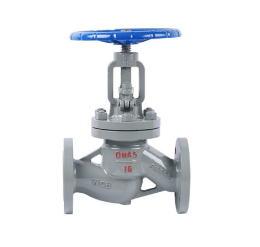pressure reducing regulator
Understanding Pressure Reducing Regulators Key Components and Applications
Pressure reducing regulators (PRRs) are essential devices in various industries, ensuring the safe and efficient use of gas and fluid systems. By controlling the pressure of fluids and gases, these regulators help maintain consistency during the various phases of processing, storage, and distribution. This article explores the fundamental principles behind pressure reducing regulators, their key components, and their widespread applications.
What is a Pressure Reducing Regulator?
A pressure reducing regulator is a mechanical device that takes a high-pressure input and reduces it to a lower, controllable output pressure. The primary function of a PRR is to ensure that the pressure downstream does not exceed a preset level, irrespective of fluctuations in the upstream pressure. This is crucial in preventing damage to equipment, ensuring safety, and achieving optimal performance in various applications.
Key Components of Pressure Reducing Regulators
1. Diaphragm The diaphragm is a flexible membrane that reacts to changes in pressure. When upstream pressure exceeds the desired downstream pressure, the diaphragm moves, adjusting the valve opening to modulate the flow of gas or fluid.
2. Spring A spring is typically used to provide resistance against the diaphragm’s movement. The spring’s tension can be adjusted to set the desired outlet pressure, allowing for fine-tuning based on the specific requirements of the system.
3. Valve Seat The valve seat forms a seal that helps regulate the flow. It works in conjunction with the diaphragm to open or close the flow path based on the pressure changes detected.
4. Adjustment Mechanism Most PRRs feature an adjustment mechanism that allows operators to easily change the setpoint pressure. This mechanism is usually a simple knob or screw located on the top of the regulator.
5. Ports The regulator has inlet and outlet ports, which facilitate the entry of high-pressure fluid and the exit of reduced pressure fluid, respectively. Proper sizing of these ports is critical to ensure appropriate flow rates.
pressure reducing regulator

Applications of Pressure Reducing Regulators
Pressure reducing regulators are used in a multitude of applications across various industries
- Natural Gas Distribution PRRs are essential in the natural gas sector to reduce high pipeline pressure to safe levels for residential and commercial use.
- Industrial Processes In manufacturing and processing facilities, PRRs help regulate pressure for equipment such as boilers and compressors, ensuring safe operations and preventing equipment damage.
- Laboratories PRRs are commonly used in scientific laboratories where gases are utilized in experiments. Precise pressure control is vital for accurate results.
- Food and Beverage Industry In this sector, PRRs are utilized to maintain consistent pressure in processes such as beer brewing and carbonation, ensuring product quality and safety.
- HVAC Systems Pressure reducing regulators are employed in heating, ventilation, and air conditioning systems to control the pressure of refrigerants, optimizing system performance and energy efficiency.
Conclusion
Pressure reducing regulators play a pivotal role in various systems requiring controlled pressure. Their ability to regulate and stabilize pressure protects equipment, enhances safety, and ensures quality output across different applications. As technology evolves, the development of more sophisticated and efficient PRRs will continue to be crucial in meeting the demands of modern industrial processes, thus supporting safety, efficiency, and sustainability in numerous fields. Understanding how these devices work and their applications is fundamental for engineers, technicians, and operators within industries relying on gases and fluids.
-
3-types-of-check-valves-maintenance-tipsNewsAug.23,2025
-
ball-valves-types-with-trunnion-mounted-designNewsAug.23,2025
-
butterfly-valve-company-production-capabilitiesNewsAug.23,2025
-
fisher-globe-valve-technical-specificationsNewsAug.23,2025
-
types-of-gaskets-for-flanges-selection-guideNewsAug.23,2025
-
wedge-gate-valve-suppliers-quality-standardsNewsAug.23,2025
-
Breakthrough in Domestic Low Temperature Valve Technology in ChinaNewsAug.18,2025




